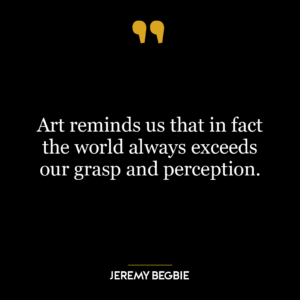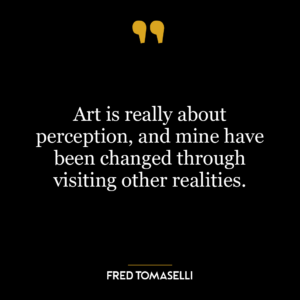This quote, ”In mysticism we deal with dreaming and the fields of perception,” delves into the essence of mysticism, which is essentially a spiritual journey or experience that transcends ordinary understanding or perception. It suggests that mysticism is a realm where the boundaries between dreaming (the unconscious, the imaginative, the symbolic) and perception (the conscious, the tangible, the empirical) blur and intermingle.
Dreaming here can be interpreted as the realm of the subconscious, the realm of symbols, images, and ideas that are not bound by the rules of physical reality. It is a space of infinite possibilities, where time and space are fluid and where profound insights and spiritual revelations can emerge.
On the other hand, the fields of perception refer to our conscious experience of reality, the world as we perceive it through our senses. This includes our understanding of ourselves, others, and the world around us, shaped by our sensory experiences and cognitive processes.
Mysticism, according to this quote, is the exploration and understanding of both these realms, and more importantly, the interplay between them. It is about recognizing the profound connection between our inner dream-world and our outer perceptual reality, and using this understanding to transcend ordinary consciousness and achieve a higher, more spiritual state of awareness.
In today’s world, this idea can be applied in many ways. In personal development, for instance, it can serve as a reminder of the importance of introspection and self-awareness. By exploring our dreams and our subconscious, we can uncover hidden fears, desires, and motivations that shape our behavior and our perception of reality.
It could also be applied to creative pursuits. Artists, writers, and musicians often tap into their dreams and subconscious to create works that resonate on a deeper, more intuitive level. In this sense, the process of creation is a mystical journey, a dance between dreaming and perception.
Moreover, in a world that is increasingly dominated by empirical science and objective facts, this quote reminds us of the importance of the subjective, the spiritual, and the mystical. It suggests that to truly understand ourselves and the world around us, we must not only observe and analyze but also dream and imagine.










